A Look Into The Markets - April 4, 2025
"Well, It's Safe to Dance, It's a Safety Dance" - The Safety Dance by Men Without Hats.
Amidst all the uncertainty around tariffs, investors bought bonds in what is called a "safe haven trade."
What is a safe haven trade?
A safe haven trade occurs when investors seek low-risk assets during times of market uncertainty or economic instability, such as financial crises or geopolitical tensions. For bonds, this typically means a shift toward government bonds, like U.S. Treasury bonds, which are viewed as safe due to their low risk of default. When investors rush to buy these bonds, demand increases, pushing bond prices higher.
Since bond prices and yields have an inverse relationship, this surge in demand causes yields (which represent the effective interest rate on the bonds) to decrease. As a result, interest rates tied to these bonds, such as the benchmark 10-year Treasury yield, tend to fall during safe haven trades. This flight to safety reflects investors' preference for stability over riskier investments like stocks.
Stocks have been under selling pressure for the month of March, and bonds/rates have been the beneficiaries. Oddly enough, March was the first month in five years where stocks went down and rates went down.
A Billion a Day
Another big event took place last week, which helped bonds and rates. At the recent Fed meeting, Fed Chair Jerome Powell announced that the Fed would pause Quantitative Tightening as of April 1st.
What does that mean?
Pausing QT is like the Fed saying, "Let's stop selling bonds for now and just keep what we have." By holding onto its stash of Treasuries, the Fed keeps demand steady.
This helps prevent bond prices from falling too much, which in turn keeps Treasury rates from spiking. Lower or stable rates make borrowing cheaper for the government (and often for people too), giving the economy a bit of breathing room.
So, pausing QT acts like a brake on rising rates, keeping things calmer in the bond market!
That certainly worked this past week amidst the elevated uncertainty.
Labor Market Still Healthy
The ADP payroll report, a reading on private-sector jobs growth, for March was reported above expectations. This was a nice surprise, which normally would hurt rates. But the aforementioned QT pause and safety trade provided too much buying pressure, limiting any rise in rates.
| 30-yr Mortgage Rates | 3-Apr-25 | |
| 6.64% | ||
| -.01 WoW (6.65%) | -.18 YoY (6.82%) | |
| 10-year Note Yield | 4-Apr-25 | |
| Below 4.50% | ||
| This time 2024: Below 4.50% | ||
Bottom Line: The bond market has been the beneficiary of uncertainty, along with the Fed pausing QT. If uncertainty continues, it could lead to even lower rates.
Looking Ahead
Next week, we are going to get the latest consumer inflation readings by way of the Consumer Price Index (CPI). This report is one of the biggest interest rate-moving reports, so markets will be watching that reading closely.
Mortgage Market Guide Candlestick Chart
For homebuyers and refinancers, mortgage rates are paramount-and they're tied to mortgage bond prices. The chart below shows a view of the Fannie Mae 30-year 5.5% coupon. The rule is simple: rising bond prices mean falling mortgage rates; falling prices mean rising rates. Recently, prices pulled back from resistance at $100 as the 10-year Treasury yield climbed above 4.20%.
Chart: Fannie Mae 30-Year 5.5% Coupon (Friday, April 4, 2025)
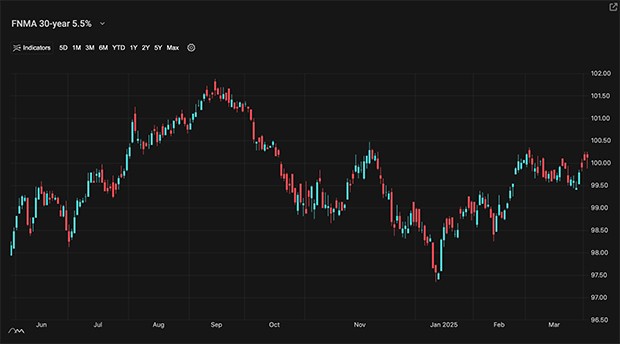
Economic Calendar for the Week of April 7 - 11
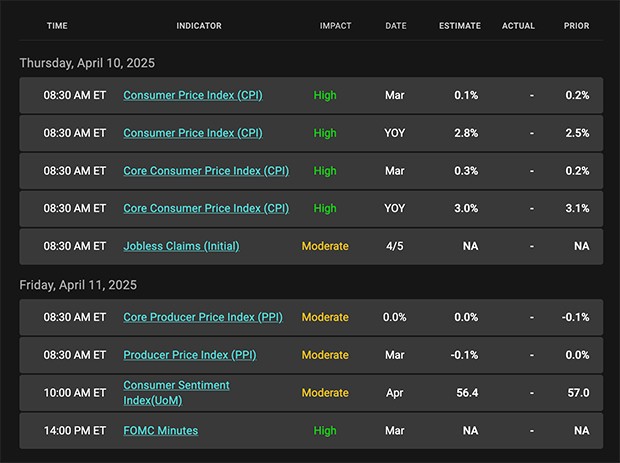
 |
|
Categories
Recent Posts
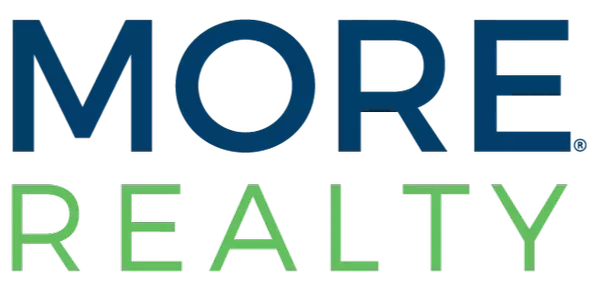
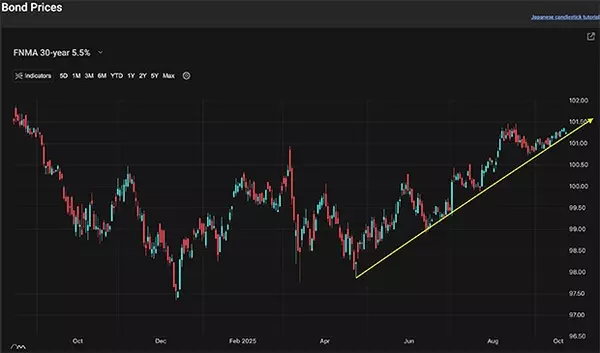





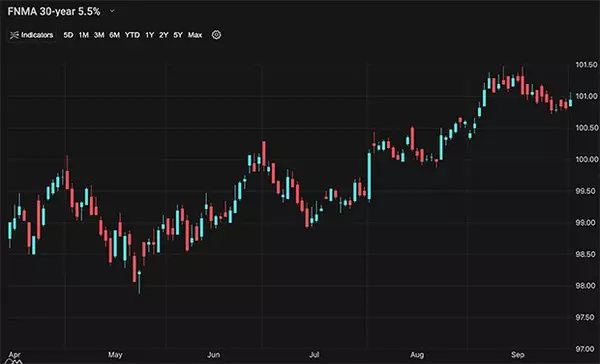

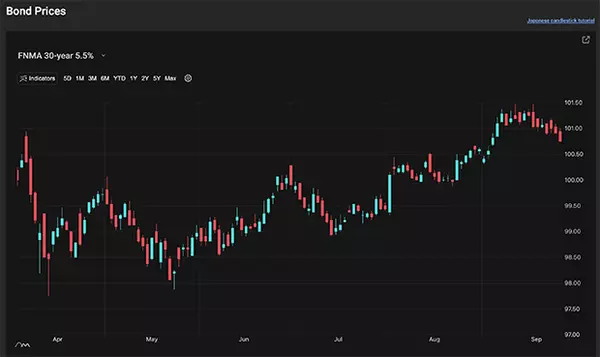

concierge@pennergroupproperties.com
16037 SW Upper Boones Ferry Rd Suite 150, Tigard, OR, 97224

